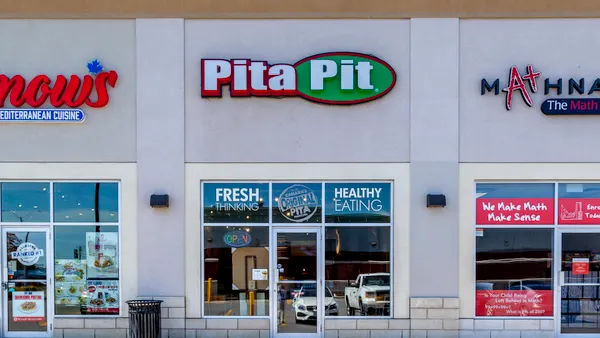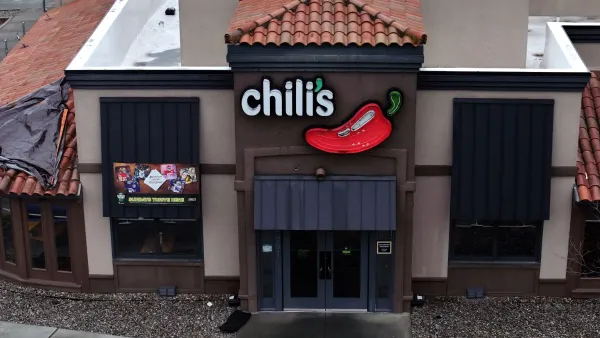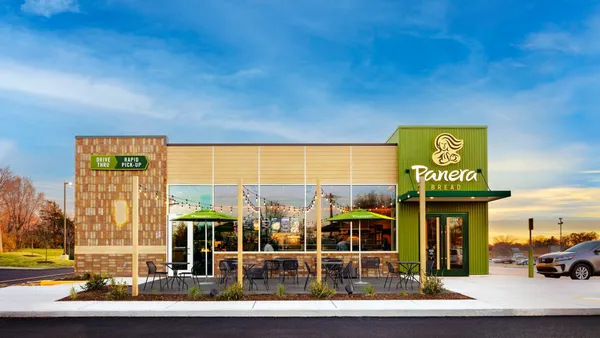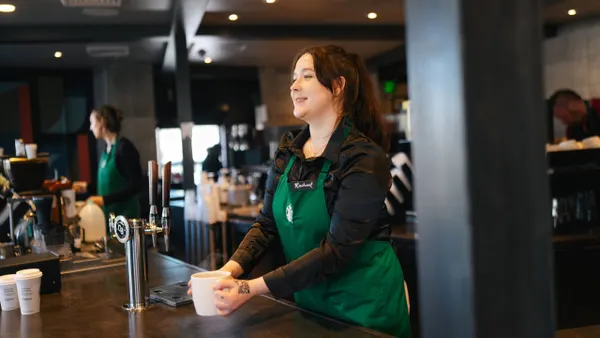While COVID-19 delivered a massive shock to the restaurant industry — which now employs one million fewer workers than in 2019 — the labor market's outlook has shifted over the course of the pandemic.
"The last couple months were slower," Elise Gould, a senior economist at the Economic Policy Institute, said of the restaurant labor market. "That's very much delta-driven... many workers may be concerned about conditions and their own health and the health of their family members."
The explosion of cases and deaths linked to the delta variant drove down demand and led some states and cities to reinstate restrictions and implement vaccine mandates. All this may have impacted the supply of restaurant labor.
But with the decline in COVID-19 cases since early September, the latest U.S. Bureau of Labor Statistics data indicates the employment situation could be improving: In October the foodservice sector added 119,000 jobs. Here are five other numbers that explain the labor challenges of the last few months.
On Sept. 1, daily COVID-19 cases crossed the 200,000 threshold for the first and only time since January. The delta surge began in early July and coincided closely with the slowdown in restaurant employment, Gould said. In August, as the delta variant drove dramatic rises in deaths and cases, the foodservice and hospitality industries shed 25,000 total jobs, according to BLS data, the first month of job losses in that sector since December 2020.
"Much of the labor market is being driven by the ebbs and flows of the pandemic itself," Gould said. In recent months, the pandemic became deadlier for working-aged adults. According to Restaurant Dive analysis of Centers for Disease Control and Prevention data, 24,506 people between the ages of 25 and 64 died of COVID-19 in September, more deaths of working-aged adults than in any other month since the pandemic began.
Restaurants lost sales, and the National Restaurant Association wrote in a letter to Congress that almost one-fifth of diners stopped eating out entirely.
Hudson Riehle, the senior vice president of the NRA's research and knowledge group, attributed the restaurant industry's current macroeconomic hardships to the delta variant.
"It set back the gradual growth and momentum, which was building before the delta variant took hold," Riehle said.
In August, the last month for which BLS data is available, employers were looking to fill about 1.49 million jobs in the foodservice and accommodations industry. They filled just over one million positions, leaving a gap of nearly half a million jobs.
Comparatively, the gap between openings and hires stood at 414,000 in July, and in June there were 257,000 more jobs posting than hires in the foodservice segment. The last month in which hiring outpaced jobs posting was March 2021 when the BLS reported there were 989,000 job openings and 1,015,000 hires.
The persistent gap between foodservice job openings and hirings is reflected in anecdotal reports of restaurants struggling to fill gaps across segments. In October, Raising Cane's deployed corporate staff to man restaurants to support its hiring efforts, while Chili's parent company announced it was raising wages to $18 an hour to attract workers and aid retention.
Changes to work due to the pandemic, including risk of infection and customer hostility, has made workers less willing to work for the prevailing wage in the foodservice industry, Gould argued.
"Those jobs are qualitatively worse because of the pandemic," Gould said.
Many restaurant workers were laid off or furloughed in 2020, and the industry has yet to recover from that blow. According to BLS data, nearly 30,000 workers left their jobs per day in August, a historically high quit rate.
Such rapid attrition, roughly double the national average, shows that many businesses, despite incentives they offer, are having trouble retaining workers. One problem, Gould suggested, was that one-time incentives mean little to workers without major efforts to raise wages.
"Signing bonuses are all fine and good, but they don't lead to meaningful increases in your standard of living in the long run," Gould said. A number of chains have announced major wage increases in the last few months. Starbucks, which is facing a unionization drive at three stores, accelerated its plan to raise its base wage to $15 an hour.
Activist groups like One Fair Wage have argued the high quit rate is due to low pay and harsh working conditions, including customer harassment. A survey by OFW, conducted in early September, found a majority of restaurant workers want to leave the industry.
According to the BLS, hourly earnings in foodservice neared $16 an hour in September 2021, an increase of about 1% in a month. Chains like Chipotle and Starbucks have raised wages to attract workers, but the steady increase in foodservice wages over the last year has put pressure on operators.
Riehle said labor typically comprises one-third of operator costs. According to Riehle, the low margin, 3% to 5% of sales, at most restaurants means consumers end up facing higher prices.
"Menu price inflation has been substantial [in 2021] and part of that has been the rapid escalation in labor costs," Riehle said.
BLS data shows limited-service restaurants experienced about a 7.1% year-over-year inflation in menu prices, while full-service restaurants faced 5.9% inflation.
In a presentation in October where he discussed macroeconomic conditions, Riehle said it was likely that pent up consumer demand for restaurants would outweigh other macroeconomic concerns in the long term and drive up sales. Many consumers want to eat at restaurants more frequently than they currently do, according to the NRA.
In September, personal disposable income in the U.S. fell 1%, according to the Bureau of Economic Analysis. Riehle said this decline will continue, making consumers pickier about where they spend their money. This could limit some of the recovery in the restaurant industry because consumers will order from restaurants less often or spend more on groceries.
"Real disposable personal income is actually expected to decline a little. We're looking for [a] 1% to 2% decline next year," Riehle said.
The decline, according to the Bureau of Economic Analysis, is attributed primarily to decreases in government benefits, like supplemental unemployment.
Riehle attributed the decreases in personal disposable income to the limited nature of previous stimulus programs, which gave consumers one-time checks.















